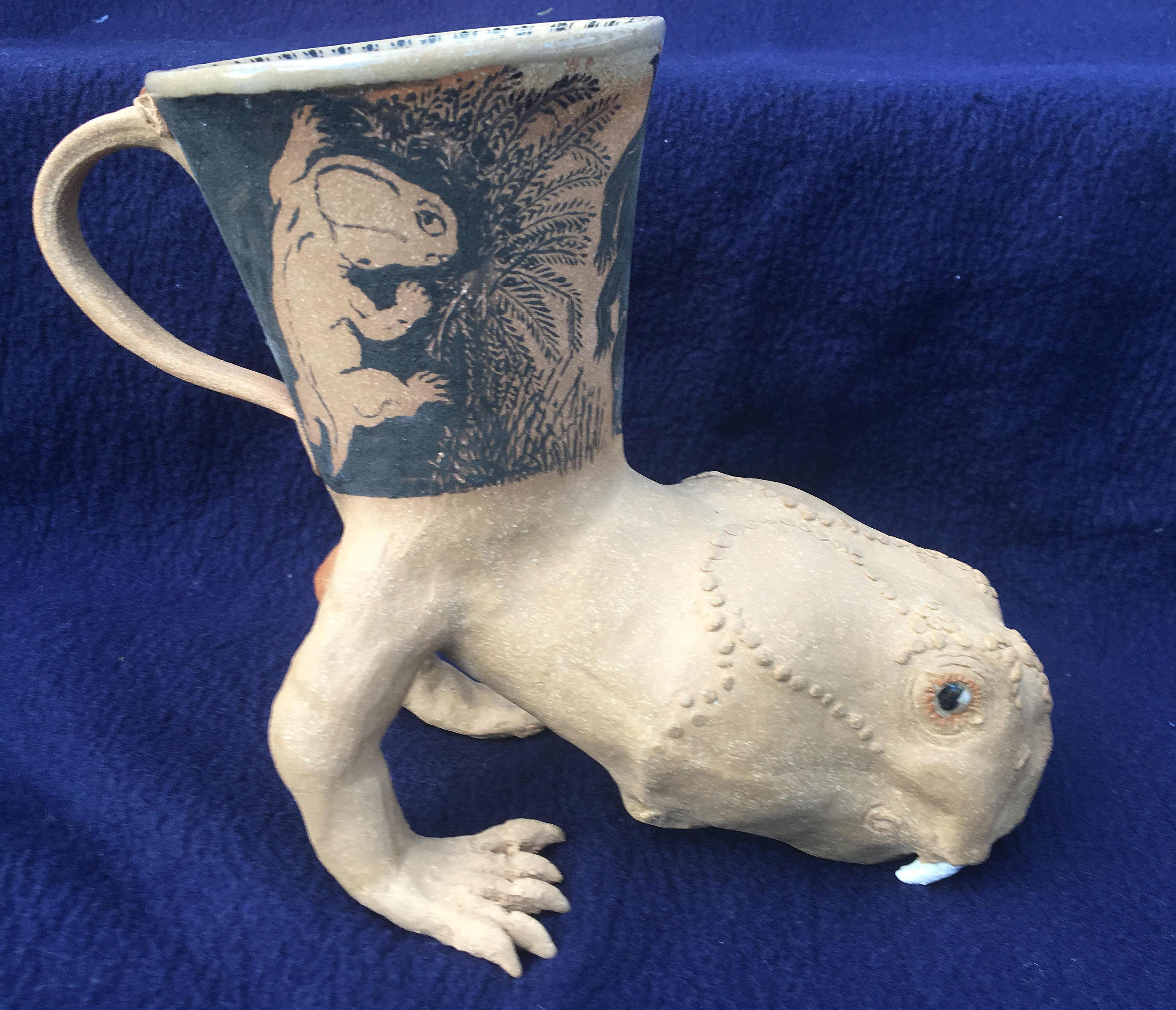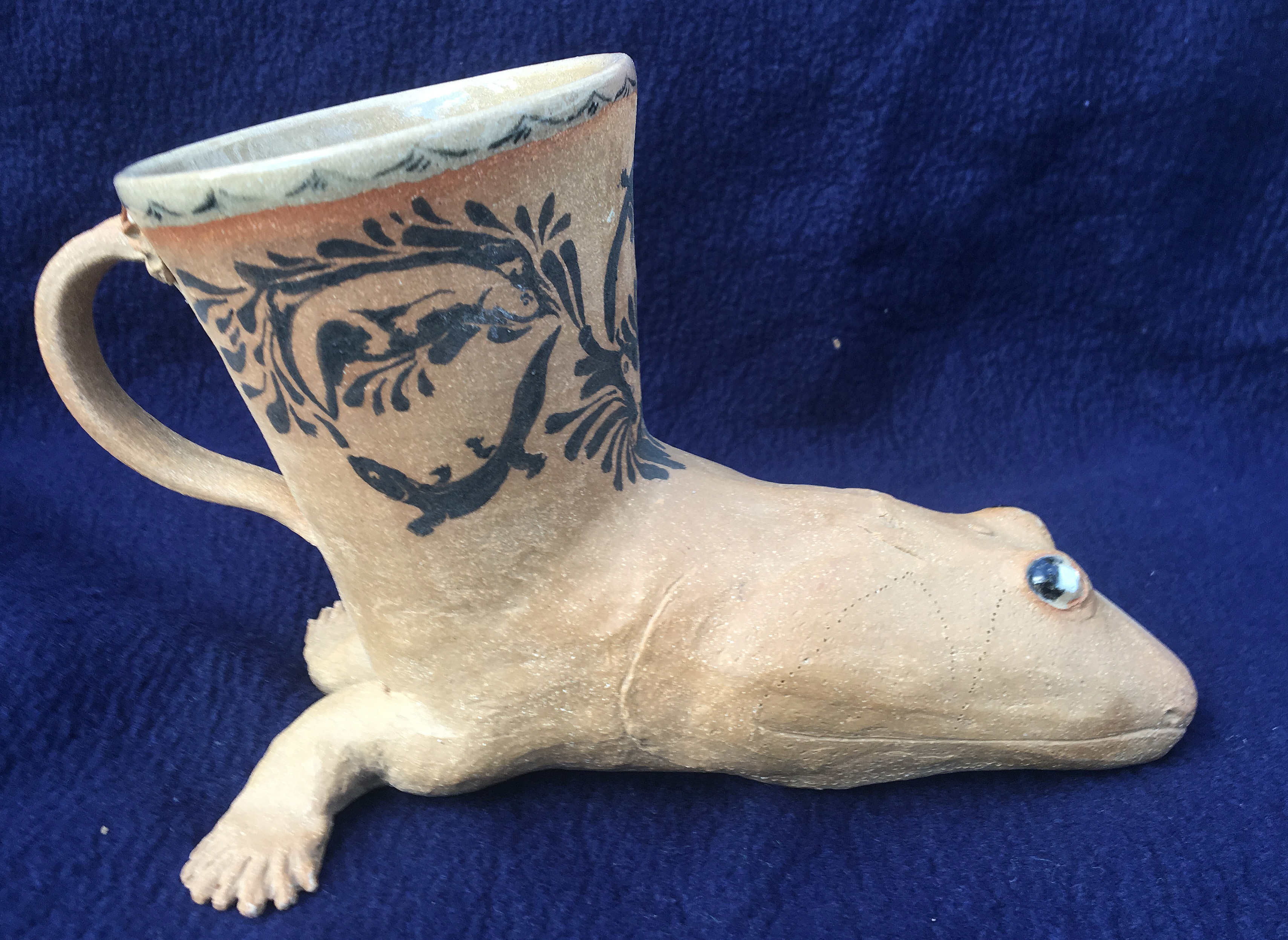Rhytons
Rhytons: My first attempts to connect ancient animals with pottery came in the form of rhytons based on ancient examples. The potters of classical antiquity would sculpt a patrix or master head from which (once bisque fired) a set of molds could be created. New heads could then be cast in the mold from rolled sheets. My experience shows that this is sufficient to capture the general shape of the head, but that details need to be reapplied, making each head an original piece. The cast head is then joined with a thrown cup and handle attached, and underglaze design created.

Large but naive Riojasuchus rhyton. Scary teeth should be tucked behind lips.






